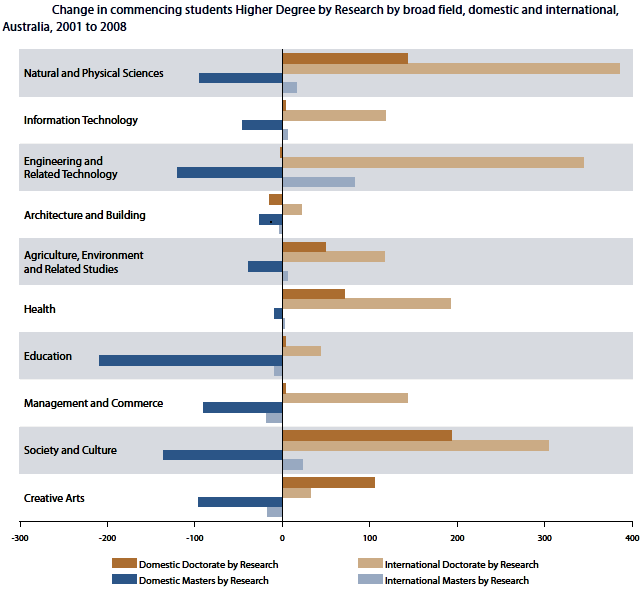|
|
|
|
|
|
|
News & Views item - September 2010 |
![]() Group of Eight Revises Prediction on Future Demand for Higher
Education in Australia. (September 5, 2010)
Group of Eight Revises Prediction on Future Demand for Higher
Education in Australia. (September 5, 2010)
Using two "sets of estimates" the Group of Eight (Go8) have released a revision of its June 2010 predictions regarding future demand for higher education in Australia.
Click here![]() to download the full report (21-pages).
to download the full report (21-pages).
The first projection method, Method A, uses Department of Education, Employment and Workplace Relations (DEEWR) data on university and FEE-HELP approved Higher Education Provider (HEP)1 enrolments (student numbers) by age and level of study. The student number data have been set against the Australian Bureau of Statistics (ABS) age estimates of the current Australian population to give a domestic participation rate for each age group. Those participation rates have been applied to the ABS Series A estimates of the Australian population to 2020 and 2030 to generate projected higher education enrolments driven by demographic growth alone.
The second approach to estimating future student demand, Method B, uses ABS estimates of participation in education and training through its annual survey of Education and Work. Rates of participation (enrolment in a course of study leading to a qualification), by age group and level of study, were computed from the survey data and applied to the ABS Series A population projections to 2020 and 2030.
Method B is more expansionary than Method A in that it captures participants
across the range of education and training
institutions, public and private, funded and unfunded. It also includes those
international students who were resident
in Australia for 12 months or more.
Summarising the predictions and viewpoint of the Go8:
Given the likely increases in demographically-driven demand and higher education participation rates, a more diverse and cost-effective structure of supply will be required from 2015 to ensure quality is not diminished.
In order to meet expected demand for higher education and replace retiring academics Australia will need to produce and/or attract through migration an extra 40,000 full time equivalent tertiary educators over the next 20 years to achieve an improved student staff ratio of 16:1.
There has been little growth since 2001 in
domestic Higher Degree by Research (HDR) students, except for PhD
commencements in natural and physical sciences, environmental studies,
health, society and culture and creative arts.
An over-reliance on international HDR students will
leave Australia vulnerable to the intensifying competition for talent
globally and change of circumstances in source countries.

Credit: Group of Eight Backgrounder 10
The Go8's overall conclusion in essence issues a stark warning to our political leaders. Whether or not any attention will be paid is a moot question:
Over the next 20 years,
demographically-driven demand and likely changes to higher education
participation rates will pose significant new challenges for higher education
policy and financing in Australia. Greater structural diversity and more
flexible financing mechanisms will be necessary to meet the changing demand
cost-effectively and without quality erosion. A major effort will be needed to
attract and retain tertiary teachers. A start must be made now to build the
staffing and physical infrastructure capacity required, given that school leaver
demand alone will accelerate in just five years time.
It is important that the next generation of students are provided for well. They will form Australia’s new knowledge workforce to sustain prosperity and drive social and environmental improvements in the future.